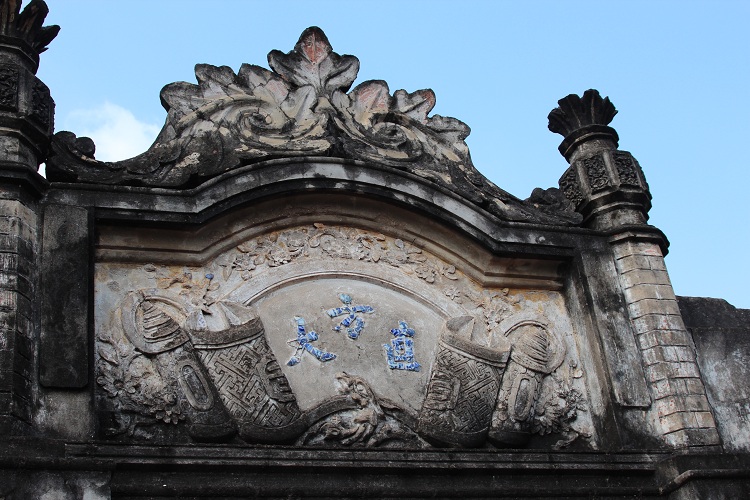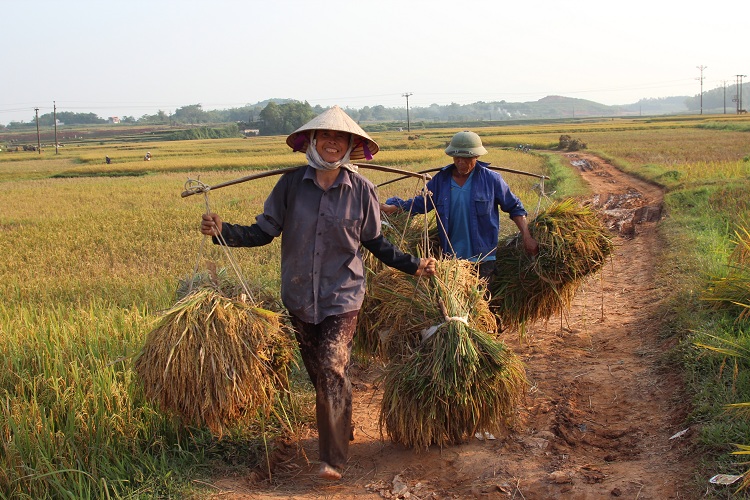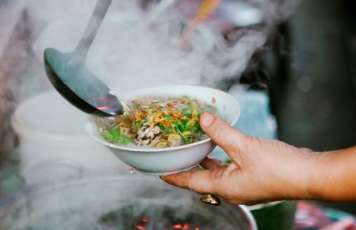
Duong Lam village “ A trip in Hanoi
- on Sep 30, 2020 By: Ngoc Nguyen
In the Red River Delta, the cradle of Vietnamese civilization, and all around Hanoi, the capital of Vietnam, there are many old villages. Among these ancient villages, Duong Lam is the best preserved and has an exceptional character that has made it a popular excursion for travellers to discover the cultures and traditions of yesteryear.
An exceptional historical vestige

Located less than fifty kilometres from Hanoi, Duong Lam village, recognized as a national historical and cultural heritage on May 19, 2006, is an ancient small village, 1200 years-old, renowned for its charm and exceptional architecture. This ancient beehive village is home to more than 900 traditional houses, an urban ensemble unique in Vietnam alongside the historic centre of Hoi An classified by Unesco. The peculiarity of these old hundred-year-old houses is that they were built of laterite stones polished by the erosion of time and have taken on a soft brown colour. Laterite, a red or brown rock, which is formed by weathering of rocks in tropical climates, was often used in the construction of houses in the Red River Delta for its insulating properties.

An ancient village typical of the Red River Delta
Duong Lam village has all the architectural characteristics typical of the culture of the Red River Delta: village gate, a 300 years-old banyan tree, wharf, well, pagoda, market, communal house ("dinh" in Vietnamese), emblem of the Vietnamese village and centre of political, social and religious life.

Formerly, the village had five gates, the main one and four secondary gates placed at the four cardinal points of the village. Today, only a gate, built in 1833, remains. You will notice it's pretty curved roof and the beautiful tiles that cover it. This gate marks the entrance to Duong Lam village, next to the 300 years-old banyan tree and the lotus pond. A true print image that appeals to travellers and Vietnamese people who are very attached to peasant values. “I like to come to Duong Lam from time to time with my wife and our children. It reminds me of my native village in Nghe An province. Life was good there and I had a happy childhood. I love to show my children what the old villages in the Vietnamese countryside looked like,” confided nostalgic Nguyen Dang Than, a Vietnamese man living in Hanoi.
A pleasant walk full of beautiful discoveries

Strolling through the winding little streets of the nine hamlets that make up the commune of Duong Lam is like diving into the ancient Vietnamese village traditions of the Red River Delta. The village is surrounded by vast expanses of rice fields. Two harvests take place each year, at the end of May and mid-September, that enliven the entire Duong Lam commune. During these times of the year, the streets and alleys of the village are lined with rice that dries in the sun as well as rice straw. This is a good show where the red and ocher of rust-hued houses mingle with the yellow of freshly harvested rice. You will observe that almost all houses have an interior courtyard. It is a workspace but also a place where the family likes to meet up to relax and discuss. In the courtyards of the houses, there are also imposing terracotta jars where soy sauce is fermented. “Duong Lam's soy sauce is very famous. The making of soy sauce has remained the same for several centuries and has been passed down from generation to generation.

We produce between 5,000 and 6,000 littres per year, ”welcomed Nguyen Thu Ha, a resident of Duong Lam since the 9th generation. You can taste this soy sauce by choosing to have lunch at one of the restaurants in Duong Lam. Be sure to stop by the small family artisanal shop that makes its own sweets. Delicious candies made from white sugar, peanuts, buckwheat and sesame seeds and whose recipe has also not changed for centuries! Enjoy with a cup of Vietnamese green tea or a delicious glass of freshly squeezed sugar cane juice. There are many sugar cane plantations around Duong Lam. In fact, Duong Lam village used to be called "Ke Mia" meaning the land of this plant.
Mia Pagoda

Mia Pagoda or Sugar Cane Pagoda due to plantations is located North of Duong Lam village on top of a hill. Built in 1632 by Ngoc Dong, a third-rank concubine of Lord Trinh Trang (1623-1657), it houses 287 statues of all sizes, half of which are made of jackfruit and the other in terracotta. A very fine example of traditional architecture with its very low roof supported by a magnificent frame and its portico with three entrances is surmounted by a bell tower.
How to get to Duong Lam village?
Besides motorbike or private car, there is public transportation available connecting Hanoi city to Duong Lam village with 3 bus services.
Hanoi - Duong Lam Bus:
From Son Tay station, take a motorbike - taxi (xe om) or taxi to reach the village about 6 kilometres away. (Taxi Son Tay: 04. 3362 6262)
Related articles:
>> Trach Xa village where a man was born to make Ao dai
>> A walk through time in Nom village
>> Where to go to eat Pho in Hanoi?
>> Vietnam tour 2023-2024: Where to go? Which itinerary? What to do? How many days?
Comment
Other Blog
Categories
Latest News
on 31 Dec, 2025
on 31 Dec, 2025
 Español
Español Français
Français




















Morgane Ter Cock
on Dec 18, 2025HerbertPhomaMS
on Oct 19, 2025Lilyan Cuttler
on Oct 15, 2025Avenue17XC
on Sep 14, 2025Avenue18JL
on Jul 21, 2025